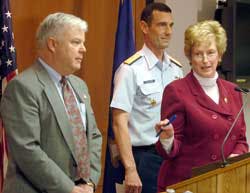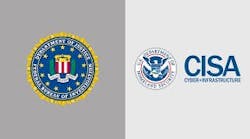TRENTON, N.J. (AP) - Federal officials in Washington said Friday they learned a tremendous amount from the massive anti-terrorism drill conducted in New Jersey and Connecticut, but would wait until all the data had been analyzed before making public what went right and wrong in the weeklong drill.
The "after action" report is expected in four to six months, said U.S. Department of Homeland Security officials during a conference call with reporters. TOPOFF 3, the nation's largest-ever anti-terrorism drill, began Monday and concluded Thursday in Connecticut and Friday in New Jersey.
"This is not over until we fully capture all of the lessons learned, in about a four-to-six month process," said Robert Stephan, director of the agency's Incident Management Group. "This phase is perhaps the more significant phase, showing us where we did well and where we need to make improvement."
The New Jersey portion of the exercise simulated a bioterror attack. Connecticut officials dealt with a simulated chemical weapons attack on the New London waterfront.
Officials in Washington declined to identify areas of the exercise where they noticed any missteps, saying that would be a narrow look at a very large-scale mission. They said they were pleased with coordinated efforts of nearly 300 federal, state and local agencies and the participation of a host of private sector companies in the drill.
At a briefing in New Jersey, state Attorney General Peter C. Harvey said heavy flooding along the Delaware and Passaic rivers this week helped the state test its limits during the TOPOFF 3 drill.
The combination of the simulated and real emergency provided a realistic scenario because terrorists would strike when resources are strained or carry out simultaneous attacks.
The drill pointed out at least two specific areas that will need to be addressed in New Jersey, officials said.
One was the difficulty in maintaining effective communication among state agencies and more than 560 municipalities. Another was the need for better facilities for handling thousands of dead bodies in a very short time.
The drill scenario simulated nearly 8,700 deaths from pneumonic plague over a four-day period. New Jersey needs a high-level autopsy room where contaminated bodies could be brought, Harvey said.
"You don't take sick and perhaps contaminated bodies to a facility like a hospital where people are trying to get well," Harvey said.
Robin Colvin, security branch chief for the U.S. Department of Homeland Security, gave New Jersey officials credit for being open and honest about weaknesses revealed.
"It takes that kind of courage, that willingness, to say that we're going to be better ... more able to respond to an attack that we all anticipate is going to happen sometime," Colvin said. "It's better to find these things out now, get them straightened out before the real thing comes."
Acting Gov. Richard J. Codey said all states need to work on getting federal legislation passed so that a state affected by a biological terrorist attack could qualify as an emergency disaster area. Now, only natural disasters such as floods and hurricanes qualify.
"Congress never imagined a biological attack of the magnitude we saw in the TOPOFF scenario," Codey said.
In Connecticut, Gov. M. Jodi Rell said Thursday that the drill provided valuable information that could be used in the event of a real terrorist attack.


